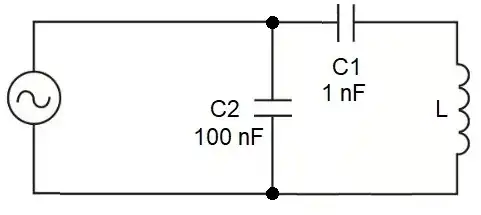159.2Hz is the resonant frequency. Shouldn't the output be at least same as the input at resonance?
EDIT: I was hoping to see voltage amplification when the circuit was at resonance without using any active components, not even batteries, using only the input signal. Now I see that this is not possible in the shown circuit because of KVL and the diode drop. But I feel this should be possible with some other clever geometric rearrangement in the circuit because if we tap a swing slightly at resonant frequency the amplitude will be increased to a arbitrarily large value.
In the shown circuit, the input signal is giving small current pulses to the LC tank at the resonant frequency. Since LC circuit cannot dissipate power, all the energy is used up by the diode?

simulate this circuit – Schematic created using CircuitLab



